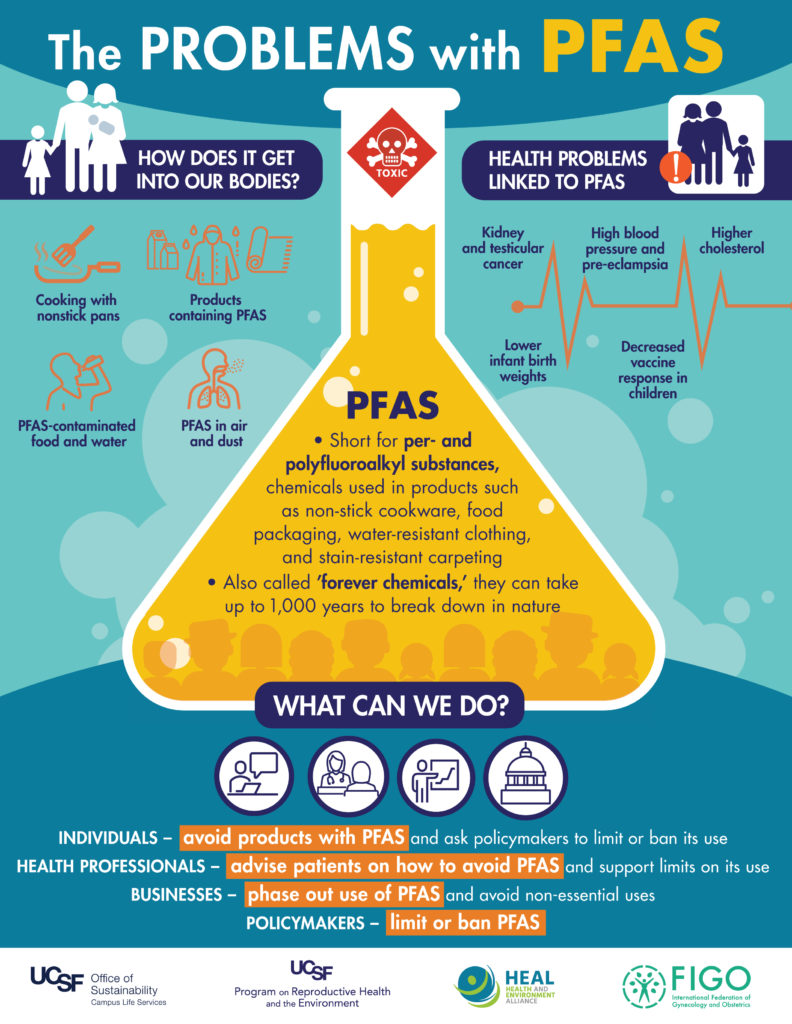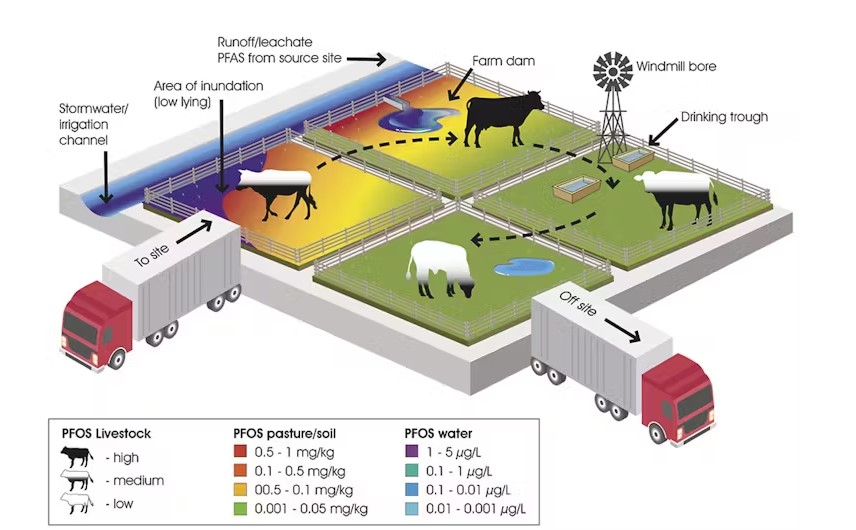Per- and polyfluoroalkyl substances (PFAS) are a group of human-made chemicals that repel oil and water, resist high temperatures, and reduce friction. They’re used in a wide variety of products, ranging from food packaging and fabrics to firefighting foams and shampoos.
Because PFAS do not break down easily, they remain in the environment. These “forever chemicals”, as they are known, accumulate in soil, water, plants, animals, and humans. According to the Centers for Disease Control and Prevention (CDC), 98% of Americans have PFAS in their blood.
Today, the food supply is one of the ways that PFAS can enter the human body. Food packaging, processing, and cookware are potential vehicles, but the Food and Drug Administration (FDA) is more concerned about plants and animals that are grown, raised, or processed in contaminated areas.
Are PFAS hazardous to your health? And are they present in meat and milk – and what about other food products? Consider the following.
PFAS and Human Health
The Environmental Protection Agency (EPA) estimates that PFAS include more than 15,000 substances. Not all of these chemicals can be detected with current tests, but EPA estimates that 70 million Americans have PFAS in their drinking water. That’s about 30% of the U.S. population.
Two PFAS chemicals, PFOS and PFOA, are of special concern because they are linked to negative health effects. These include increased cholesterol levels, changes in liver enzymes, kidney and testicular cancer, pregnancy-induced hypertension, and lower antibody response to some vaccines.
In April 2024, the EPA finalized a rule that will designate PFOS and PFOA as hazardous substances under the Comprehensive Environmental Response, Compensation, and Liability Act (CERCLA), which is better known as the Superfund. This will require polluters to pay to clean up contamination.
PFAS in Meat and Milk
Unfortunately, this EPA action comes too late for a Michigan farmer who applied municipal wastewater biosolids to his crop fields as a fertilizer. Because the sludge was contaminated with PFAS, the haylage and corn silage that the farmer used as livestock feed also became contaminated.
Specifically, the state of Michigan determined that the farmer’s beef contained 1.9 parts per billion (ppb) PFOS. That’s less than what warrants a recall from the U.S. Department of Agriculture (USDA), but Michigan still issued a consumption advisory.
Within the USDA, the Food Safety Inspection Service (FSIS) has required PFAS testing for beef since 2020. The Farm Service Agency (FSA) has also updated its Dairy Indemnity Payment Program (DIPP) to compensate farmers for contaminated milk.
There’s research and regulations about milk and meat, but what about other foods?

The Total Diet Study
In 2021, the FDA published the results of a Total Diet Study that included milk, meat, seafood, fruits, vegetables, and processed foods like peanut butter. The agency found that only 3 of 92 food samples had detectable levels of PFAS. That’s less than 2%.
“At this time,” the Michigan State University Agricultural Extension summarized a year later, “the FDA states that there is not any scientific evidence present to people from consuming any particular food based on PFAS contamination.”
PFAS contamination is more concentrated at certain locations, such as the Michigan farm that applied municipal waste biosolids to its fields. Yet this category of chemicals is so large, and spread so easily by groundwater, that finding where PFAS is not brings to mind an old saying from the farm.
It’s like looking for a needle in a haystack.

